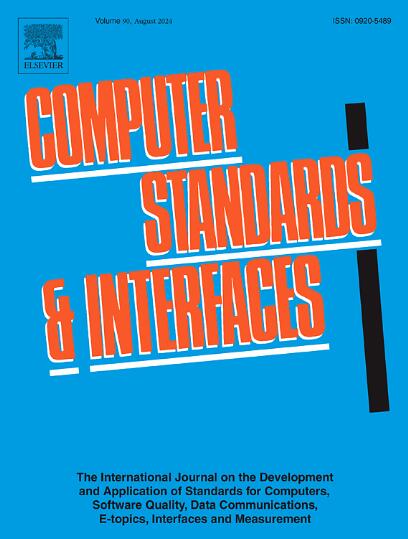未来领域:基于大型语言模型和生成式人工智能的智能农业数字化转型
IF 3.1
2区 计算机科学
Q1 COMPUTER SCIENCE, HARDWARE & ARCHITECTURE
引用次数: 0
摘要
随着自然语言理解和生成技术的发展,语言模型(LLM)在医疗保健和金融等许多领域都显示出了巨大的作用。语言模型参与文本讨论的能力一直是许多研究的主题,研究结果在多个领域都证明令人鼓舞。传统的图像分类网络无法理解作物病害和病因,这进一步阻碍了精确诊断。大规模的农业诊断模型将基于生成式预训练变换器(GPT),并辅以农业环境。通过研究与农业相关的文本语料库对基于转换器的语言(TBL)模型进行预训练的功效,本研究深入探讨了农业自然语言处理(ANLP)。为了最大限度地利用它,我们研究了几个重要方面,包括提示构建、响应解析和几个 ChatGPT 版本。尽管 LLM 和生成式人工智能在农业人工智能(AI)方面的有效性和巨大潜力已得到证实,但这方面的探索还很少。因此,本研究旨在探索 LLM 和生成式人工智能在智能农业中应用的可能性。特别是,我们提出了概念工具和技术背景,以促进对问题空间的理解,并发现该领域的新研究方向。本文概述了生成式对抗网络(GAN)架构的演变,随后首次系统回顾了智能农业和精准农业系统中的各种应用,涉及智能农业和畜牧业、精准农业、农业语言处理(ALP)、农业机器人(AR)、植物表型(PP)和收获后质量评估等多种视觉识别任务。我们概述了其可能性、困难、制约因素和不足之处。这项研究为农业领域提供了一个路线图,在这些领域中,LLM 的整合可能会在短期内实现。研究为这一领域的进一步研究提出了令人兴奋的方向,这可能会带来更好的农业 NLP 应用。本文章由计算机程序翻译,如有差异,请以英文原文为准。
Fields of the future: Digital transformation in smart agriculture with large language models and generative AI
Language models (LLMs) have shown to be very useful in many fields like healthcare and finance, as natural language comprehension and generation have advanced. The capacity of LLM to participate in textual discussion has been the subject of much research, and the findings have proved encouraging across several domains. The inability of conventional image classification networks to comprehend the causes of crop diseases and etiology further impedes precise diagnosis. Agricultural diagnostic models on a grand scale will be based on generative pre-trained transformers (GPT) assisted with agrarian settings. By examining the efficacy of text corpora linked to agriculture for pretraining transformer-based language (TBL) models, this research delves into agricultural natural language processing (ANLP). To make the most of it, we looked at several important aspects, including prompt building, response parsing, and several ChatGPT versions. Despite the proven effectiveness and huge potential, there has been little exploration of LLM and Generative AI to agriculture artificial intelligence (AI). Therefore, this study aims to explore the possibility of LLM and Generative AI in smart agriculture. In particular, we present conceptual tools and technical background to facilitate understanding the problem space and uncover new research directions in this field. The paper presents an overview of the evolution of generative adversarial network (GAN) architectures followed by a first systematic review of various applications in smart agriculture and precision farming systems, involving a diversity of visual recognition tasks for smart farming and livestock, precision agriculture, agricultural language processing (ALP), agricultural robots (AR), plant phenotyping (PP), and postharvest quality assessment. We outline the possibilities, difficulties, constraints, and shortcomings. The study lays forth a road map of accessible areas in agriculture where LLM integration is likely to happen shortly. The research suggests exciting directions for further study in this area, which could lead to better agricultural NLP applications.
求助全文
通过发布文献求助,成功后即可免费获取论文全文。
去求助
来源期刊

Computer Standards & Interfaces
工程技术-计算机:软件工程
CiteScore
11.90
自引率
16.00%
发文量
67
审稿时长
6 months
期刊介绍:
The quality of software, well-defined interfaces (hardware and software), the process of digitalisation, and accepted standards in these fields are essential for building and exploiting complex computing, communication, multimedia and measuring systems. Standards can simplify the design and construction of individual hardware and software components and help to ensure satisfactory interworking.
Computer Standards & Interfaces is an international journal dealing specifically with these topics.
The journal
• Provides information about activities and progress on the definition of computer standards, software quality, interfaces and methods, at national, European and international levels
• Publishes critical comments on standards and standards activities
• Disseminates user''s experiences and case studies in the application and exploitation of established or emerging standards, interfaces and methods
• Offers a forum for discussion on actual projects, standards, interfaces and methods by recognised experts
• Stimulates relevant research by providing a specialised refereed medium.
 求助内容:
求助内容: 应助结果提醒方式:
应助结果提醒方式:


